Comfrey and Alkaloids:
More Studies Needed
I sell live Comfrey roots, seeds, dried comfrey and oil.
Comfrey
Easy Order Page
|
My comments
are in brown. -Nancy
|
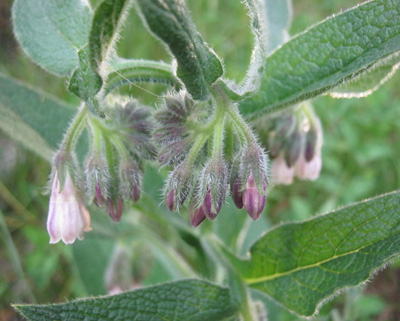
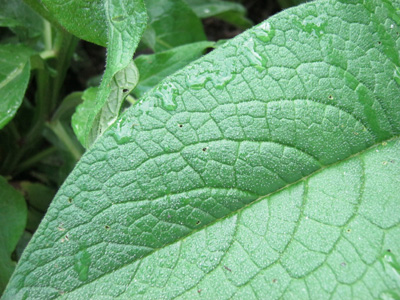
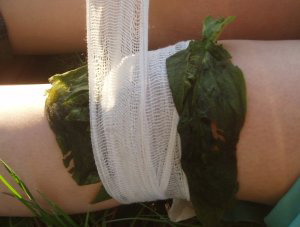
|
Comfrey
Toxicity Tests Were Unrealistic
Inaccurate
Reports, Poor Testing
"Comfrey is the victim of a bad press, inaccurate reports, and four true
cases of toxicity which in themselves are not straightforward, but suggest
overdosing on comfrey."
"When the toxicity tests were done in the late 70s, a chemical constituent
called pyrrolizidine alkaloid was isolated, extracted from comfrey leaves
& injected into baby rats at what many medical herbalists consider an 'unrealistic
level'. In other words far more comfrey than a human would eat to get such
a toxic level of PAs."
Good if Used in Moderation
"Also, a chemical in isolation will cause different reactions from a
group of chemical constituents containing that one as well."
"Yes, the pyrrolizidine alkaloids (PAs) in comfrey do hurt your liver.
Yes, you have to take lots of the herb in order to get veno-occlusive liver
disease. So don't take lots of comfrey every day for weeks at a time; if
you do believe that you need it, take it in small amounts."
"And know, too, that PAs are absorbed through the skin. That means that
it's a really bad idea to use comfrey long-term for wounds."
(The above 5 paragraphs are from Henriettes Herbal, Henriette
Kress, www.henriettes-herb.com)
Seek the advice of your physician, herbalist or health care specialist for more information about comfrey and you.
|
|
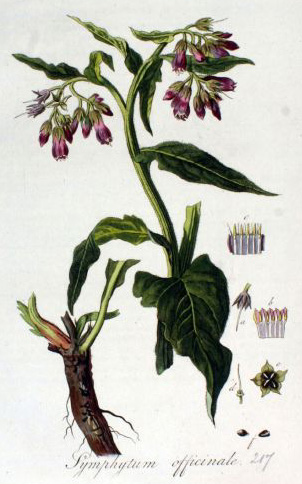
|
Not Enough
Research on Alkaloids in Comfrey: No Long-Term Studies
1.
No Long-Term Studies. Some Evidence in Lab Animals But What About People?
"There are no substantial, long-term follow-up data to assess whether
exposure to PAs results in increased incidence of chronic liver disease
or cancer in man. Available clinical and experimental data suggest that
a single episode of PA toxicity and possibly also a long-term low level
exposure may lead to cirrhosis of the liver."
"The International Agency for Research on Cancer (IARC) evaluated several
PAs for carcinogenicity in 1976 and 1983. It was concluded that there was
in experimental animals 'sufficient or limited evidence' for the carcinogenicity
of monocrotaline, retrorsine, isatidine, lasiocarpine, petasitenine, senkirkine,
and of extracts of the PA-containing plants Petasites japonicum, Tussilago
farfara, Symphytum officinale, Senecio longilobus, Senecio numorensis, Farfugium
japonicum and Senecio cannabifolius."
(The above 2 paragraphs are from the European Medicines
Agency, October 25th 2012, Committee on Herbal Medicinal Products, www.ema.europa.eu/docs/
en_GB/document_library/ Public_statement/2012/10/ WC500134311.pdf.)
|
|
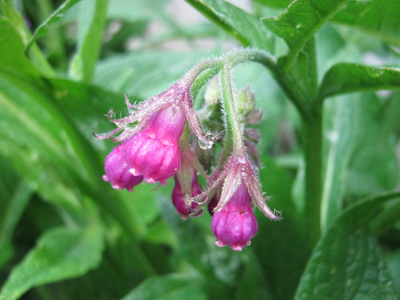
|
Not Enough
Research on Alkaloids in Comfrey: Limited Verification
2.
Human Cases of Toxicity are Poorly Validated
"The available reports on human poisonings do not provide sufficient
reliable information to be used as a basis for establishing a health-based
guidance-value."
(European Food Safety Authority, Scientific Opinion on Pyrrolizidine
Alkaloids in Food and Feed, 2011, www.efsa.europa.eu/ en/search/doc/2406.pdf)
3. Only 2 Significant Comfrey Studies
"Despite all the rhetoric there are in fact only two full-scale toxicological
studies on Comfrey. To quote other publications which merely interpret the
findings of these two studies does not constitute additional evidence."
(GardenWeb, Comfrey- The Facts, 2004, Scientific research
is referenced with citations. forums2.gardenweb.com/forums/ load/herbal/msg080635098259.html)
|
|
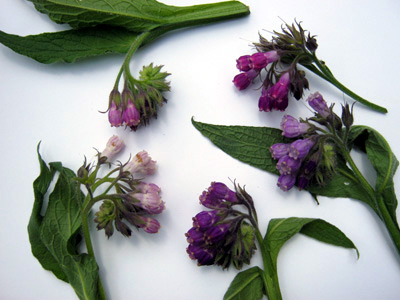
|
Treating
All Comfrey Alike
True/Common
and Russian Comfrey Treated as Same Plant
"Another problem with the studies which were done on comfrey is that
the researchers often did not differentiate between the different species
of comfrey. Russian comfrey (Symphytum x uplandicum) contains up to 5 times
the amount of PAs as common comfrey (Symphytum officinale). However, in
one study, the names S. x uplandicum and S. officinale were used interchangeably."
(Kerry's Herbals, www.kerrysherbals.com/articles/ comfrey_safety.shtml)
|
|
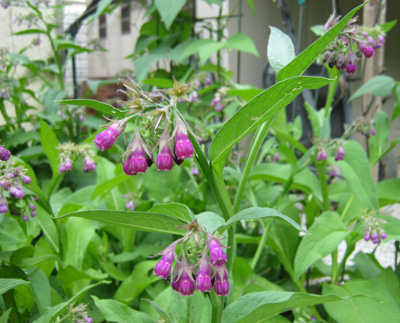
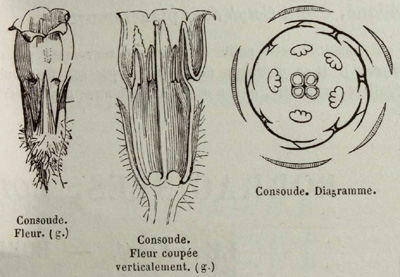
|
Moderation
is Key in All Things
Too
Much of A Good Thing
"The safety of Symphytum has been a contentious issue between scientists
and the herb industry. It is true that the number of documented cases of
Symphytum poisoning is low. Acute toxicity is low. A 47-year-old woman developed
liver disease after drinking up to 10 cups of comfrey tea per day and consuming
comfrey pills in addition, over a period of 1 year."
(Handbook of Natural Toxins: Food Poisoning, 1992.)
Another article said she took "comfrey pills by the handful".
(Quote is from 'Safety Issues Affecting Herbs: Pyrrolizidine
Alkaloids' by Subhuti Dharmananda, Ph.D., Director, Institute for Traditional
Medicine, Portland, Oregon, www.itmonline.org/arts/pas.htm.)
I do not know what type of comfrey this woman
was using. And I do not know what other herbs, medications, foods, etc she
was consuming.
As In All Things, Do Not Go to Extremes
"If you want my straight up opinion on PAs. I donít use it too much internally
anymore. Yeah, I know, itís a traditional food. And yeah, Iíve read Susun
Weed (www.susunweed.com). But Iíve also read what Paul Bergner, Henriette
Kress (www.henriettes-herb.com), David Bunting and other have to say about
it."
(Medicine Woman's Roots, bearmedicineherbals.com/ bone-deep-beauty-notes-on-comfrey.html)
Be moderate. Use comfrey internally for a specific
problem for a short period. External use is safer (or safe). Do research
on the internet and in books for more information. Consult your physician
and/or health care provider.
|
|
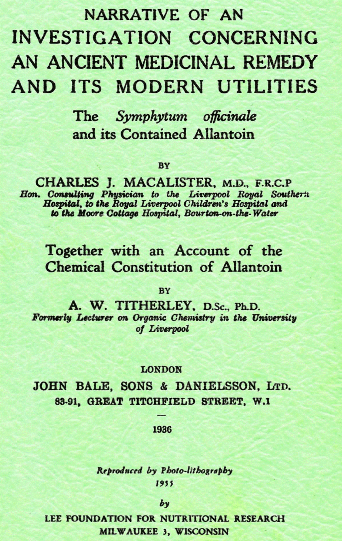
|
Use Comfrey
Carefully
Herbalists vs Regulatory Agencies
"The debate on the toxicity of comfrey and coltsfoot for internal use
pits traditional herbalists against regulatory agencies. The traditional
herbalists argue that these plants have been widely used for centuries without
any observed ill effects. Regulatory agencies point to evidence that pyrrolizidine-alkaloid-containing
plants, and comfrey and coltsfoot in particular, have caused liver disease
in humans."
"The evidence suggests that both plants should be used with cautionó especially
for long term use, for pregnant and lactating women, and for children. It
is not easy to identify a toxic dose of pyrrolizidine alkaloids."
(Paul Bergner, Medical Herbalism: Materia Medica and Pharmacy,
medherb.com/Materia_Medica/Symphytum_-_Comfrey,_Coltsfoot,_and _Pyrrolizidine_Alkaloids.htm)
Use comfrey wisely.
|
|







